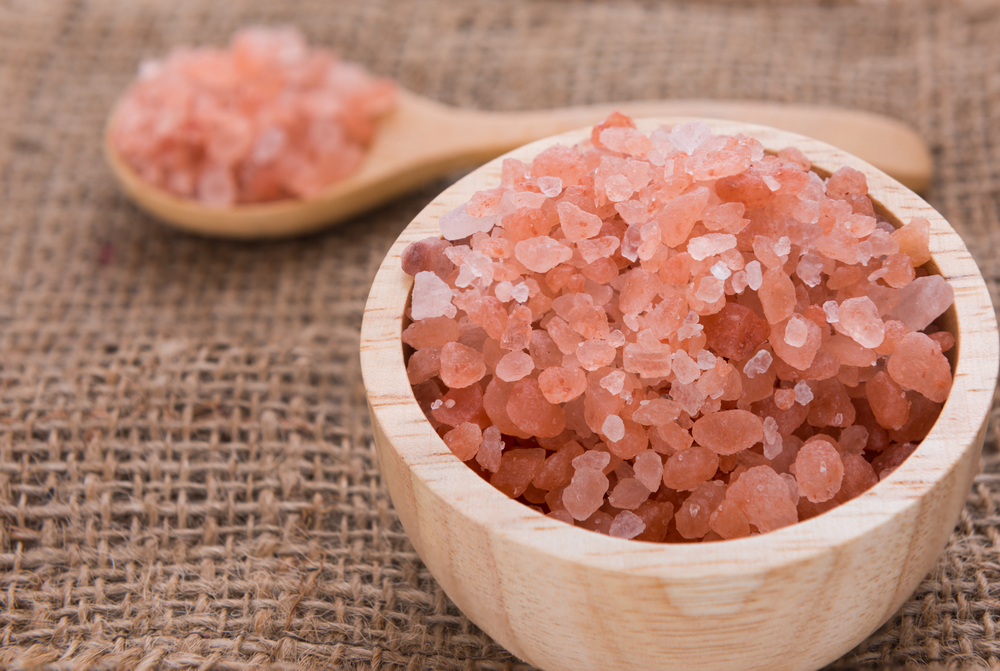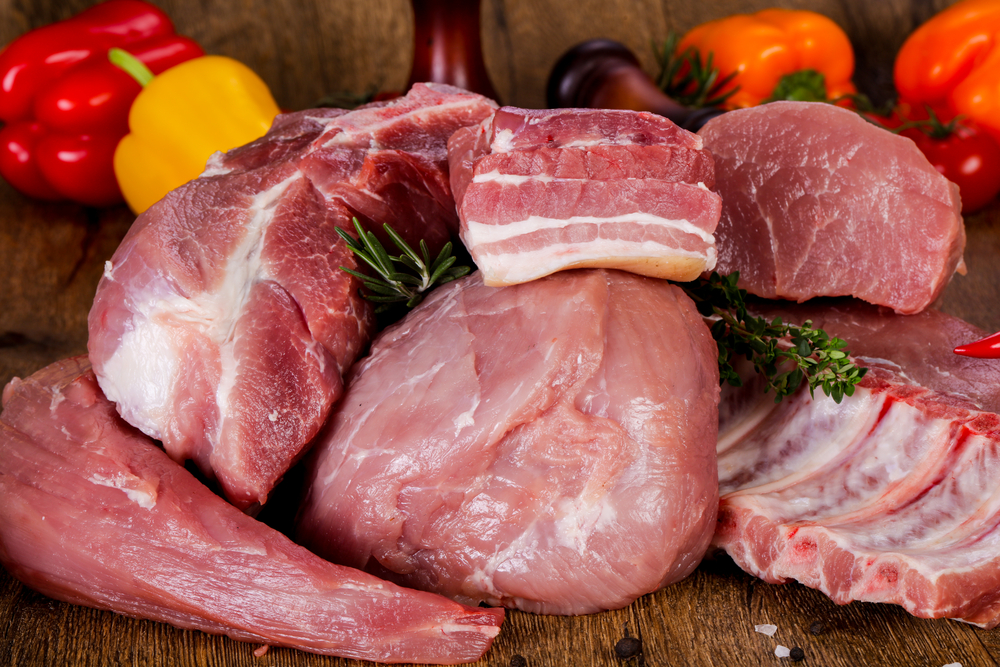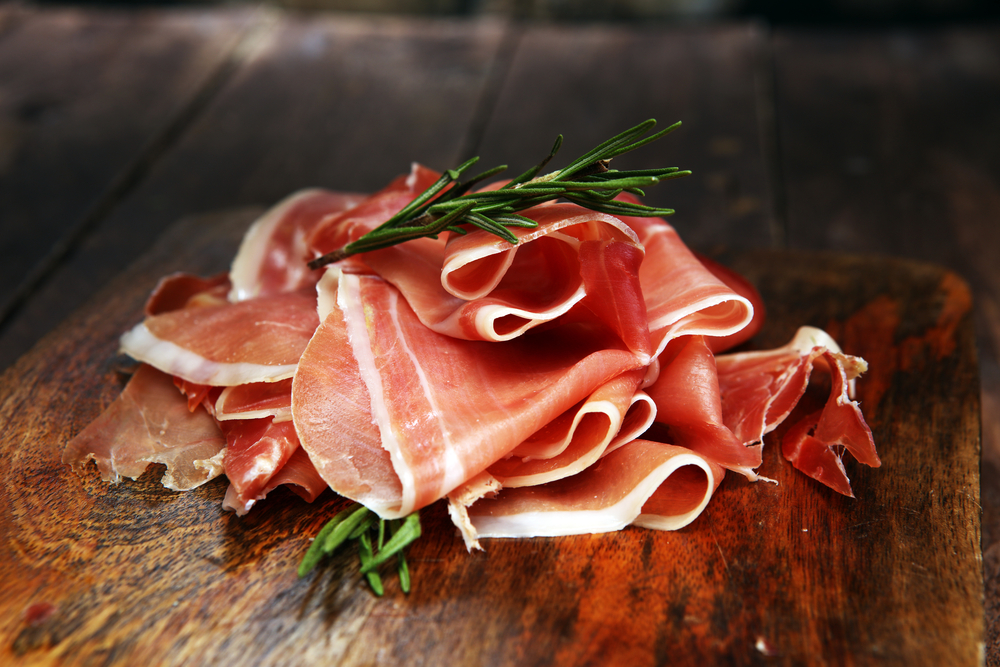When it comes to ham, you may wonder what it tastes like. Ham is a popular meat that is enjoyed in various forms, from breakfast to dinner.
It can be served in sandwiches, as a main course, or even as a snack. But what does ham taste like?

The taste of ham can vary depending on various factors, such as the type of ham, the curing process, and the seasoning or glaze used.
Generally, ham has a savory, smoky, and slightly sweet flavor. It has a fleshy texture that is moist and bold in color. The taste of ham is often described as a combination of three Ss: savory, sweet, and smoky.
Key Takeaways
- Ham has a savory, smoky, and slightly sweet flavor.
- The taste of ham can vary depending on the type of ham, curing process, and seasoning or glaze used.
- Ham has a fleshy texture that is moist and bold in color.
Understanding Ham
As a culinary expert, I have tasted and prepared different types of ham, and I can confidently say that ham is a flavorful meat that is enjoyed worldwide.
Ham is a pork product that comes from the hind leg of a pig. It is a rich source of protein and is commonly consumed as a breakfast food or as an ingredient in various dishes.
In this section, I will explain what ham tastes like and how it is made.
Ham is a form of charcuterie, which means “cooked flesh.” Hams are cured, a process that uses salt to remove moisture from the meat, making it a means of preservation.
Curing can be done via a dry method, where salt and often nitrates are applied as a rub. This method is known as dry-curing, which results in a firmer and saltier ham.
Wet-curing, on the other hand, involves soaking the meat in a brine solution. This method results in a milder and sweeter ham.
The taste of ham can vary depending on how it is prepared and what type of ham it is. Generally, ham has a savory, smoky, and slightly sweet flavor.
Unadorned, ham has a slightly sweet and smoky flavor, similar to sliced cold cuts found in the deli counter. However, ham readily takes on the flavor of whatever glaze or seasoning is used to dress it.
Different types of ham have different flavors and textures. For example, country ham is tougher with a more salty taste, while prosciutto is a dry-cured ham that is thinly sliced and has a nutty and salty flavor.
Spiral ham is a popular type of ham that is sliced and packaged. It has a smoky and sweet taste and is often served during holidays and special events.
In conclusion, ham is a versatile and delicious meat that can be enjoyed in various forms. Its flavor can be described as savory, smoky, and slightly sweet.
The curing process and type of ham can affect its taste and texture. So, next time you bite into a slice of ham, take a moment to appreciate the complex flavors and the history behind this beloved meat.
Types of Ham
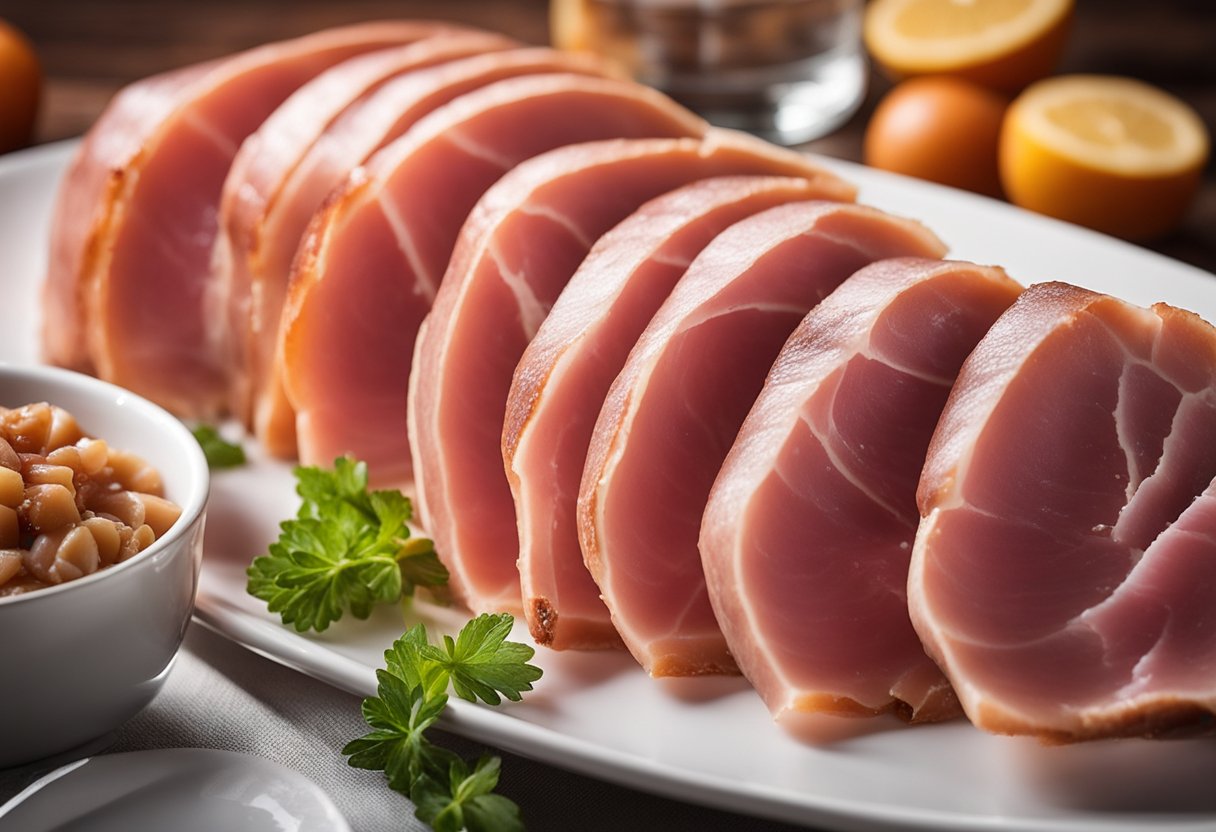
When it comes to ham, there are several different types to choose from. Here are some of the most common types of ham:
Fresh Ham
Fresh ham is a cut of pork that has not been cured or smoked. It has a mild flavor and is often roasted or baked. Fresh ham is also sometimes used to make ham steaks.
Cured Ham
Cured ham is ham that has been treated with salt, sugar, and other ingredients to preserve it and add flavor. There are several different types of cured ham, including city ham, country ham, and black forest ham.
City Ham
City ham is a type of cured ham that is typically wet-cured in a brine solution. It has a milder flavor than country ham and is often served sliced.
Country Ham
Country ham is a type of cured ham that is dry-cured with salt, sugar, and other ingredients. It has a strong, salty flavor and is often served in thin slices or used as a seasoning in dishes.
Black Forest Ham
Black forest ham is a type of cured ham that is smoked over fir and pine wood. It has a distinctive smoky flavor and is often served in thin slices.
Prosciutto
Prosciutto is a type of cured ham that is dry-cured and aged for several months. It has a delicate, sweet flavor and is often served in thin slices as an appetizer or used as a topping for pizza or pasta dishes.
Each type of ham has its own unique flavor and texture, so it’s worth trying a few different types to see which one you like best.
The Taste Profile of Ham
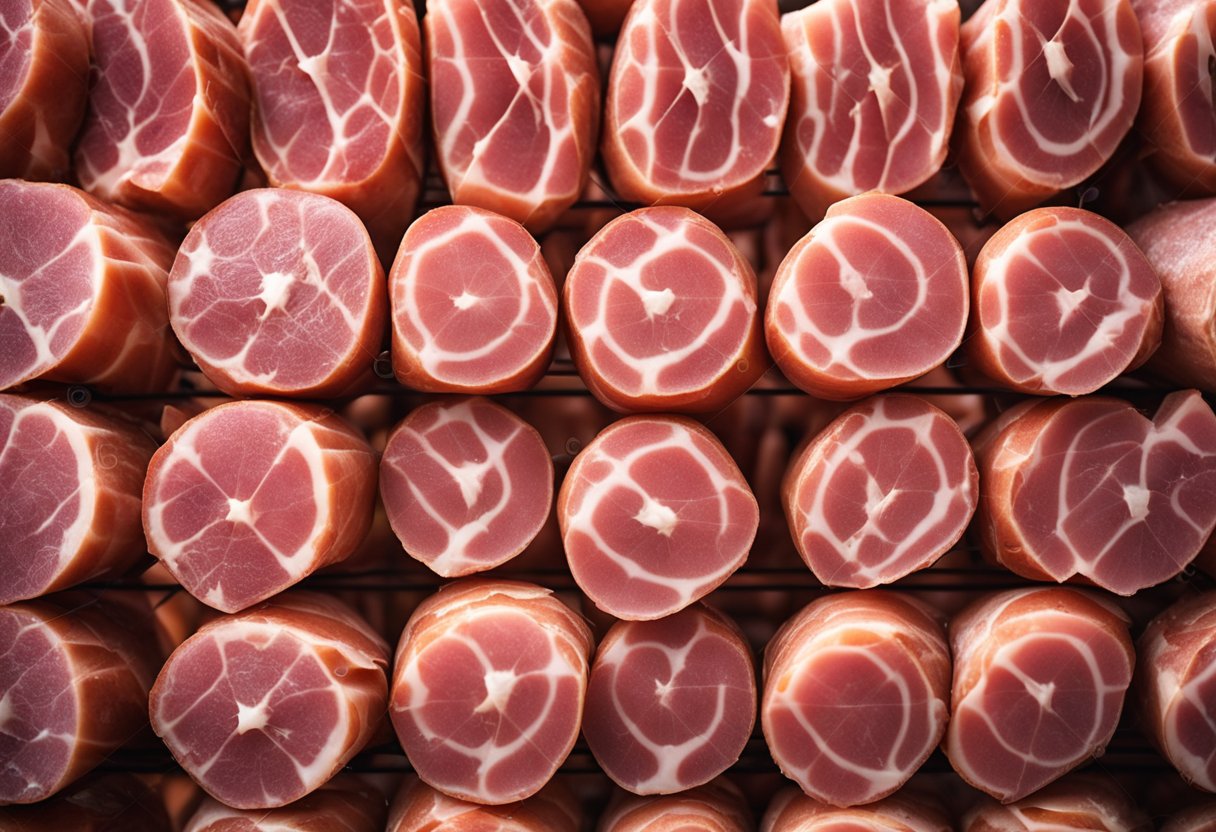
As a food lover, I find the taste of ham to be unique and delicious. Ham is a cured meat that is enjoyed all over the world, and it has a complex taste profile that is hard to describe with just one word.
In this section, I will break down the different taste elements that make up the flavor of ham.
Sweetness
One of the most noticeable taste elements in ham is sweetness. Ham has a mildly sweet taste that comes from the curing process.
Curing involves adding salt, sugar, and other ingredients to the meat to preserve it and enhance its flavor. The sugar in the curing mixture gives the ham a slightly sweet taste that balances out the salty and savory flavors.
Saltiness
Ham is also known for its salty taste. The salt used in the curing process is essential to preserving the meat and giving it its distinctive flavor.
The saltiness of ham can vary depending on the type of ham and how it is prepared. Some hams are saltier than others, and some may be soaked in water before cooking to reduce the saltiness.
Smokiness
Smokiness is another taste element that is often associated with ham. Many hams are smoked to give them a rich, smoky flavor.
The smoke can come from different types of wood, such as hickory or applewood, and can add depth and complexity to the taste of the ham.
Savory
Finally, ham has a savory taste that is hard to define. Savory is a flavor that is often described as meaty, umami, or brothy.
It is the taste that makes you want to take another bite and savor the deliciousness. The savory taste of ham comes from the meat itself, as well as the curing and cooking process.
In conclusion, the taste of ham is a combination of sweetness, saltiness, smokiness, and savory flavors.
These taste elements work together to create a delicious and unique flavor that is enjoyed by many people around the world.
Texture of Ham

When it comes to ham, texture is just as important as taste. Ham has a fleshy texture that is both satisfying and substantial.
The meat is dense and chewy, with a slight resistance when bitten into. The texture of ham is what sets it apart from other types of meat.
The texture of ham can vary depending on how it’s prepared. For example, a fresh ham will have a slightly chewier texture than a cured ham.
A cured ham, on the other hand, will be firmer and more compact. The texture of ham is also affected by how it’s cooked. A baked ham will have a slightly crispy exterior and a tender, juicy interior.
One of the reasons why ham has such a unique texture is because it comes from the large, round muscles of a hog’s hind leg.
These muscles are responsible for supporting the pig’s weight, which means they are dense and meaty. This is what gives ham its fleshy texture.
Overall, the texture of ham is both substantial and satisfying. It has a meaty, fleshy texture that is unlike any other type of meat. Whether you’re enjoying it on its own or as part of a dish, the texture of ham is sure to please.
Curing Process
Ham is a cured meat that is made from the hind leg of a pig. The curing process involves treating the meat with a combination of salt, sugar, and other flavors. Curing is done to preserve the meat and to give it a distinct flavor and color.
Cured Ham
Cured ham is the most common type of ham that is available in the market. The curing process involves injecting the meat with a brine solution that contains salt, sugar, and other flavorings.
The meat is then left to cure for a certain period of time, which can range from a few days to several months. The curing process gives the meat its distinct flavor and color, which can range from pink to deep rose.
The curing process also serves an anti-bacterial purpose, as it helps to prevent the growth of harmful bacteria.
The use of nitrates and nitrites in the curing process has been a topic of controversy, as some studies have suggested that they may be harmful to human health.
However, the FDA has approved the use of nitrates and nitrites in cured meats, as long as they are used within certain limits.
Uncured Ham
Uncured ham is a newer type of ham that has become increasingly popular in recent years. Unlike cured ham, uncured ham is not injected with a brine solution that contains nitrates or nitrites.
Instead, it is cured using natural ingredients such as celery powder, which contains naturally occurring nitrates.
Because uncured ham is not injected with a brine solution, it has a slightly different, yet naturally occurring color than cured ham. It also has a milder flavor than cured ham, which some people prefer.
However, it is important to note that uncured ham is still a processed meat and should be consumed in moderation.
In conclusion, the curing process is an important step in the production of ham. Cured ham and uncured ham both have their own unique flavor and color, and it is up to the individual to decide which type of ham they prefer.
Regardless of the type of ham, it is important to consume it in moderation as part of a balanced diet.
Cooking Ham
When it comes to cooking ham, there are several methods to choose from, each producing a slightly different flavor and texture. In this section, I will discuss the three most common ways to cook ham: baked, roasted, and smoked.
Baked Ham
Baking a ham is a simple and popular method that produces a tender and juicy meat. To bake a ham, preheat your oven to 325°F.
Place the ham in a roasting pan and cover it with foil. Bake the ham until it reaches an internal temperature of 140°F, which usually takes about 20 minutes per pound.
You can also add a glaze during the last 30 minutes of baking to add some extra flavor.
Roasted Ham
Roasting a ham is similar to baking, but it usually involves higher temperatures and a shorter cooking time. To roast a ham, preheat your oven to 375°F.
Place the ham in a roasting pan and cook it uncovered until it reaches an internal temperature of 140°F, which usually takes about 15 minutes per pound. You can also add a glaze during the last 30 minutes of roasting to add some extra flavor.
Smoked Ham
Smoking a ham is a great way to add a unique and smoky flavor to the meat. To smoke a ham, you will need a smoker and some wood chips. Soak the wood chips in water for at least 30 minutes before using them.
Preheat your smoker to 225°F and add the wood chips. Place the ham in the smoker and smoke it until it reaches an internal temperature of 140°F, which usually takes about 3-4 hours depending on the size of the ham.
No matter which method you choose, cooking ham is a great way to add some variety to your meals. Try experimenting with different glazes and seasonings to find your favorite flavor combination.
Seasoning and Glazing Ham
When it comes to seasoning and glazing ham, there are many options to choose from. The right combination of flavors can make a ham taste absolutely delicious. Here are some popular options for seasoning and glazing ham:
Seasoning
Seasoning a ham is an important step in bringing out its natural flavors. Some popular seasonings for ham include:
- Salt and pepper: a simple and classic seasoning that enhances the natural flavor of the ham.
- Mustard: a tangy and flavorful seasoning that pairs well with ham.
- Pineapple: a sweet and tropical seasoning that adds a unique flavor to ham.
- Seasonings and flavorings: there are many different seasonings and flavorings that can be used to season ham, including garlic, thyme, rosemary, and more.
When seasoning a ham, it’s important to keep in mind the flavors of the glaze that will be added later. You don’t want to overpower the glaze with too much seasoning.
Glazing
Glazing a ham adds a sweet and savory flavor to the meat. Some popular glazes for ham include:
- Honey glaze: a sweet and sticky glaze that pairs well with the salty flavor of ham.
- Sugar glaze: a classic glaze made with brown sugar and other ingredients that give the ham a caramelized flavor.
- Mustard glaze: a tangy and flavorful glaze that pairs well with ham.
- Pineapple glaze: a sweet and tropical glaze that adds a unique flavor to ham.
When glazing a ham, it’s important to remember to baste the ham with the glaze every 15-20 minutes while it’s cooking. This will help the glaze caramelize and create a delicious outer layer on the ham.
Overall, seasoning and glazing ham is a great way to add flavor to this classic meat. There are many different combinations of seasonings and glazes to try, so don’t be afraid to experiment and find your perfect flavor.
Serving Ham

When it comes to serving ham, there are many ways to enjoy this delicious meat. Whether you prefer ham sandwiches, ham recipes, or ham with sides, there are plenty of options to choose from.
Ham Sandwiches
Ham sandwiches are a classic way to enjoy ham. You can make a simple ham and cheese sandwich or get creative with different toppings and spreads. Here are a few ideas to get you started:
- Classic Ham and Cheese: Layer sliced ham and cheese on your favorite bread, add lettuce and tomato if desired, and enjoy.
- Grilled Ham and Cheese: Butter two slices of bread, add sliced ham and cheese, and grill until the cheese is melted and the bread is golden brown.
- Ham and Mustard: Spread Dijon mustard on a slice of bread, add sliced ham, and top with another slice of bread.
Ham Recipes
Ham is a versatile ingredient that can be used in a variety of recipes. From casseroles to salads, there are countless ways to incorporate ham into your meals. Here are a few ham recipes to try:
- Ham and Potato Casserole: Layer sliced potatoes and ham in a baking dish, top with cheese and cream, and bake until golden brown.
- Ham and Broccoli Salad: Combine chopped ham, broccoli, and cheese with a creamy dressing for a delicious and satisfying salad.
- Ham and Cheese Quiche: Mix eggs, milk, ham, and cheese, pour into a pie crust, and bake until set.
Ham with Sides
When serving ham, it’s important to have the right sides to complement the flavors of the meat. Here are a few ideas for sides to serve with ham:
- Mashed Potatoes: Creamy mashed potatoes are the perfect side dish for ham.
- Green Beans: Lightly steamed or roasted green beans add a fresh and healthy element to your meal.
- Salad: A simple salad with fresh greens and a tangy dressing is a great way to balance out the richness of the ham.
Overall, serving ham is a delicious and satisfying way to enjoy this classic meat. Whether you prefer ham sandwiches, ham recipes, or ham with sides, there are plenty of options to choose from.
Storing Ham
When it comes to storing ham, it is important to follow proper guidelines to maintain its quality, flavor, and safety. Here are some tips for storing ham:
Fresh Ham
Fresh ham should be stored in the refrigerator at a temperature of 40°F or below. If the ham is not going to be used within a few days, it can be frozen.
Wrap the ham tightly in plastic wrap or aluminum foil, and store it in a freezer-safe container or bag. It can be stored in the freezer for up to 6 months.
Cooked Ham
Cooked ham should be stored in the refrigerator at a temperature of 40°F or below. It can be wrapped tightly in plastic wrap or aluminum foil, or stored in an airtight container.
Cooked ham can be stored in the refrigerator for up to 7 days.
Leftovers
If you have leftover ham, it should be stored in the refrigerator at a temperature of 40°F or below. It can be wrapped tightly in plastic wrap or aluminum foil, or stored in an airtight container.
Leftover ham can be stored in the refrigerator for up to 7 days.
Thawing Frozen Ham
If you have frozen ham, it should be thawed in the refrigerator. Place the ham in a container or on a plate to catch any liquid that may leak out during the thawing process.
Allow the ham to thaw in the refrigerator for 24 hours for every 5 pounds of ham.
Preserving Sliced Cooked Ham
If you have sliced cooked ham, it can be preserved by wrapping it tightly in plastic wrap or aluminum foil, or storing it in an airtight container.
Sliced cooked ham can be stored in the refrigerator for up to 7 days.
By following these guidelines, you can ensure that your ham stays fresh, flavorful, and safe to consume.
Nutritional Value of Ham
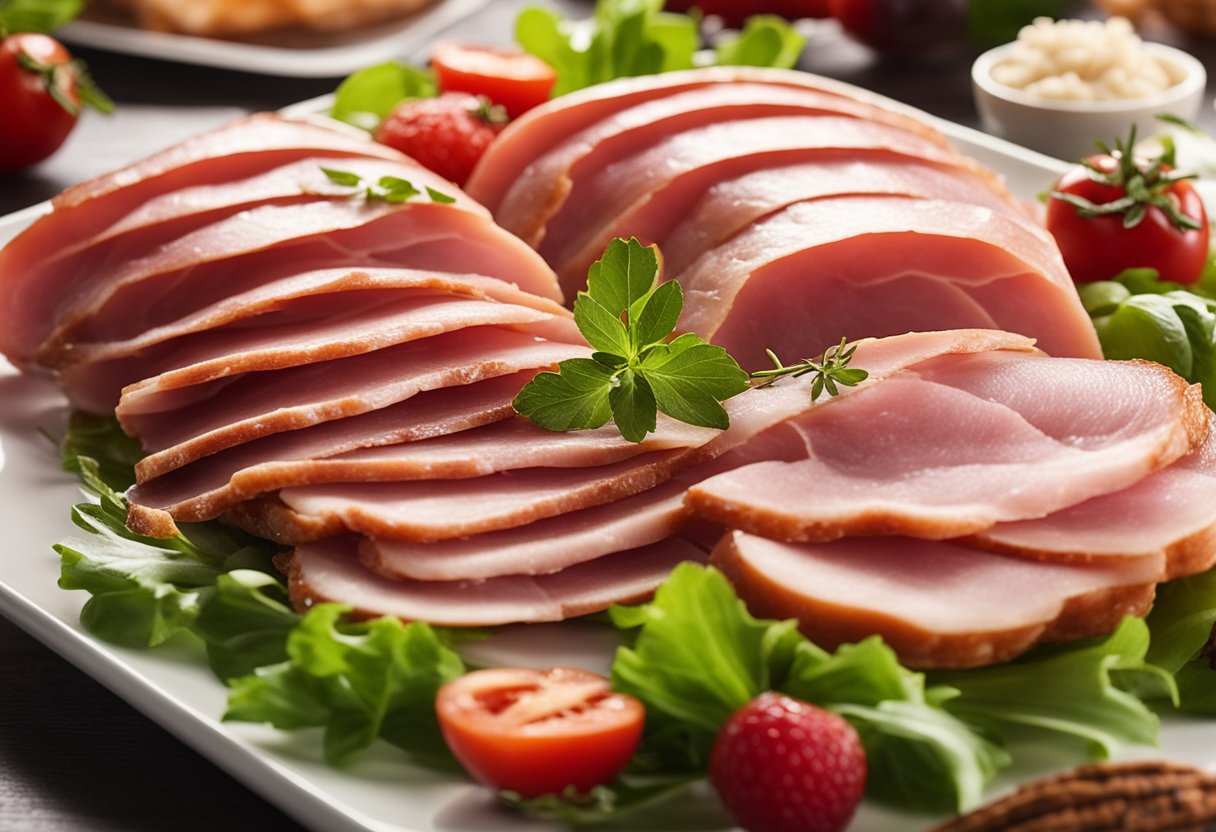
As a pork product, ham is a good source of protein and several essential vitamins and minerals. However, it is also high in sodium and saturated fat, which can be detrimental to health if consumed in excess.
A 3-ounce serving of ham typically contains around 14 grams of protein, which is essential for building and repairing muscles, tissues, and cells in the body.
It also contains several B vitamins, including thiamin, niacin, and vitamin B6, which help convert food into energy and support brain function.
In terms of minerals, ham is a good source of phosphorus, which is important for bone health, and selenium, which acts as an antioxidant and helps protect the body from damage caused by free radicals.
However, it is important to note that ham is also high in sodium, with a 3-ounce serving containing around 1050 milligrams.
Excessive sodium intake can lead to high blood pressure, heart disease, and stroke, so it is important to consume ham in moderation as part of a balanced diet.
Additionally, ham is high in saturated fat, which can contribute to the development of heart disease and other health problems.
To minimize the negative effects of saturated fat, it is important to consume ham in moderation and choose leaner cuts whenever possible.
Overall, ham can be a nutritious addition to a balanced diet when consumed in moderation. It is a good source of protein, B vitamins, and minerals like phosphorus and selenium.
However, it is also high in sodium and saturated fat, so it should be consumed in moderation as part of a healthy diet.
Moderation and Ham
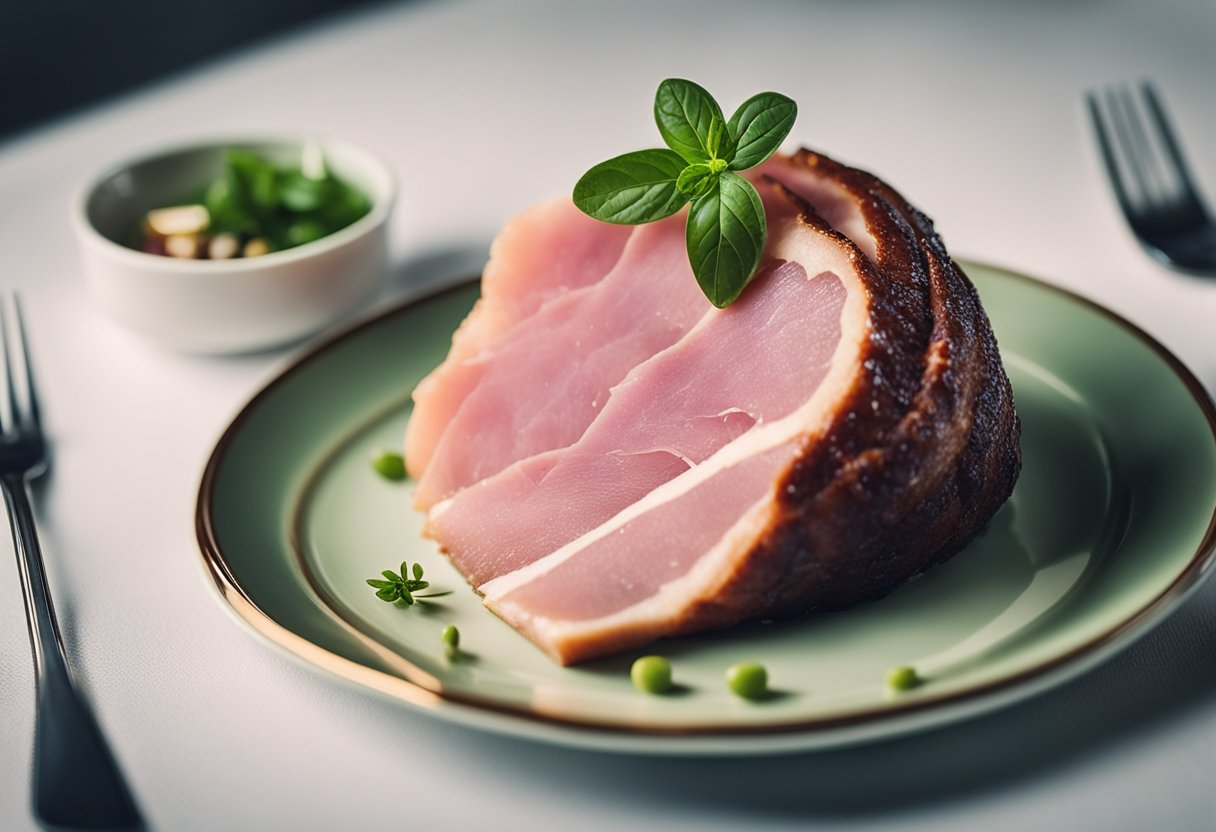
As with any food, moderation is key when it comes to consuming ham. While ham can be a tasty addition to many meals, it is important to keep in mind that it is high in sodium and fat.
According to the American Heart Association, a single serving of ham can contain up to 50% of the recommended daily intake of sodium.
This can be problematic for individuals with high blood pressure or other health concerns.
To enjoy ham in moderation, it is important to pay attention to portion sizes. A serving size of ham is typically around 3 ounces, or the size of a deck of cards.
It is also important to choose leaner cuts of ham, such as ham that has been trimmed of visible fat.
In addition to portion control and selecting leaner cuts, there are other ways to enjoy the flavor of ham without overindulging.
Adding small amounts of diced ham to a salad or omelet can provide a burst of flavor without adding too much sodium or fat.
Overall, while ham can be a delicious addition to many meals, it is important to consume it in moderation and make smart choices when it comes to portion sizes and preparation methods.
Frequently Asked Questions
What are the different types of ham?
There are several types of ham, including country ham, city ham, prosciutto, and black forest ham. Each type of ham has its unique flavor and texture.
What is the difference between honey ham and regular ham?
Honey ham is made with honey glaze, which gives it a sweet taste. Regular ham, on the other hand, is not glazed with honey and has a more savory flavor.
What makes ham taste unique compared to other meats?
Ham is unique because of its curing process. It is cured with salt, sugar, and other seasonings, which gives it a distinct flavor. The smoking process also adds a smoky flavor to the meat.
What is the best way to prepare ham for sandwiches?
The best way to prepare ham for sandwiches is to slice it thinly and evenly. You can also add cheese, lettuce, and other toppings to enhance the flavor.
Why does ham taste so good?
Ham tastes good because of its unique flavor profile. It is savory, sweet, and smoky, which makes it a versatile ingredient in various dishes.
Can you describe the flavor profile of ham?
Ham has a salty and savory taste with a hint of sweetness. It also has a smoky flavor that comes from the smoking process. The combination of these flavors makes it a delicious meat that can be enjoyed in many ways.


